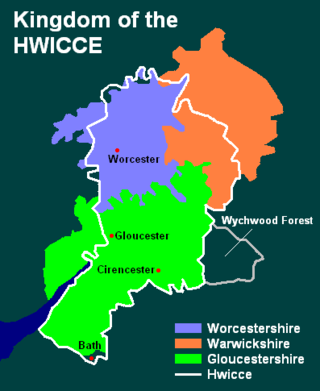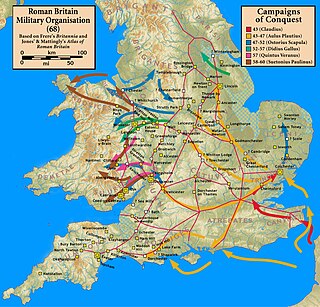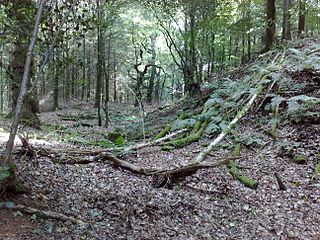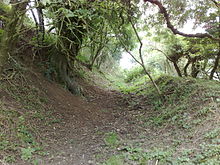
Ceawlin was a King of Wessex. He may have been the son of Cynric of Wessex and the grandson of Cerdic of Wessex, whom the Anglo-Saxon Chronicle represents as the leader of the first group of Saxons to come to the land which later became Wessex. Ceawlin was active during the last years of the Anglo-Saxon expansion, with little of southern England remaining in the control of the native Britons by the time of his death.

The Kingdom of the West Saxons, also known as the Kingdom of Wessex, was an Anglo-Saxon kingdom in the south of Great Britain, from around 519 until England was unified.

Year 577 (DLXXVII) was a common year starting on Friday of the Julian calendar. The denomination 577 for this year has been used since early medieval times, when the Anno Domini calendar era became the prevalent method in Europe for naming years.

Hwicce was a kingdom in Anglo-Saxon England. According to the Anglo-Saxon Chronicle, the kingdom was established in 577, after the Battle of Deorham. After 628, the kingdom became a client or sub-kingdom of Mercia as a result of the Battle of Cirencester.

Wansdyke is a series of early medieval defensive linear earthworks in the West Country of England, consisting of a ditch and a running embankment from the ditch spoil, with the ditching facing north.

The Dobunni were one of the Iron Age tribes living in the British Isles prior to the Roman conquest of Britain. There are seven known references to the tribe in Roman histories and inscriptions.

The region now known as Gloucestershire was originally inhabited by Brythonic peoples in the Iron Age and Roman periods. After the Romans left Britain in the early 5th century, the Brythons re-established control but the territorial divisions for the post-Roman period are uncertain. The city of Caerloyw was one centre and Cirencester may have continued as a tribal centre as well. The only reliably attested kingdom is the minor south-east Wales kingdom of Ergyng, which may have included a portion of the area. In the final quarter of the 6th century, the Saxons of Wessex began to establish control over the area.

Glevum was originally a Roman fort in Roman Britain that became a "colonia" of retired legionaries in AD 97. Today, it is known as Gloucester, in the English county of Gloucestershire. The name Glevum is taken by many present-day businesses in the area and also by the 26-mile Glevum Way, a long-distance footpath or recreational walk encircling modern Gloucester.
Dyrham is a village and parish in South Gloucestershire, England.

Hinton is a village in South Gloucestershire, England. It is one mile north of Dyrham and forms part of the civil parish of Dyrham and Hinton. The Bull is the local pub.

Arlingham is a village and civil parish in the Stroud District of Gloucestershire, England. The 2021 Census recorded a parish population of 533. The parish contains the hamlets of Milton End, Overton and Priding. The next parish to the east is Fretherne with Saul.
The Timeline of conflict in Anglo-Saxon Britain is concerned with the period of history from just before the departure of the Roman Army, in the 4th century, to just after the Norman Conquest in the 11th century.

The Battle of Peonnum was fought about AD 660 between the West Saxons under Cenwalh and the Britons of what is now Somerset in England. It was a decisive victory for the Saxons, who gained control of Somerset as far west as the River Parrett. The location of the battle is uncertain.
The Severn Valley is a rural area of the West Midlands region of England, through which the River Severn runs and the Severn Valley Railway steam heritage line operates, starting at its northernmost point in Bridgnorth, Shropshire and running south for 16 miles (26 km) to Ribbesford, a few miles south of Bewdley, Worcestershire in the Wyre Forest.
Cuthwine, born c. 565, was a member of the House of Wessex, the son of King Ceawlin of Wessex. Cuthwine's father Ceawlin was deposed from the throne of Wessex in 592 by his nephew Ceol. Therefore, Cuthwine never inherited the throne. Cuthwine went into exile for many decades, remaining a strong leader of the Saxons and passing on the royal line through his three sons.
Cuthwulf, also sometimes Cutha, was the third son of Cuthwine, and consequently a member of the House of Wessex. Although a member of the direct male line from Cynric to Egbert, Cuthwulf was never king. He is said to have been born circa 592, and his death date is unknown.
Events from the 6th century in England.
The Battle of Cirencester was fought in 628 at Cirencester in modern-day England. The conflict involved the armies of Mercia, under King Penda, and the Gewisse, under Kings Cynegils and Cwichelm. The Mercians defeated the Gewisse and, according to Bede, "after reaching an agreement", took control of the Severn valley and the minor kingdom of the Hwicce, which had been under the influence of the Gewisse since the Battle of Dyrham in 577.
The Anglo-Saxon Chronicle records a battle fought in the year 592 at Woden's Barrow, the neolithic long barrow now known as Adam's Grave, near Marlborough, Wiltshire. The year entry states: "Her micel wælfill wæs æt Woddes beorge, 7 Ceawlin wæs ut adrifen."
The Sumorsaete were an Anglo-Saxon group living in what is now Somerset, presumably around the town of Somerton. They are evidently the source of the county's name. The group may have been established as early as 577, when the Saxons conquered part of the area from the Britons, but they are not mentioned by name until 845. They may have been related to the obscure Glastening or Glestinga, who may be the source of the name Glastonbury.












